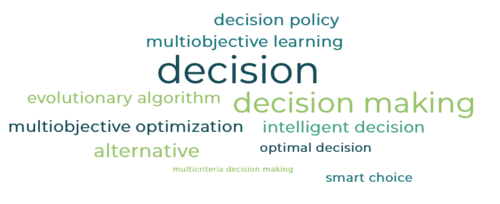Multi-Criteria Decision-Making
Multi-Objective Optimization using evolutionary algorithms have many advantages. One is that they are anytime algorithms and can be stopped anytime. Even if the exact optimal solutions have not been found. In such cases we probably end up with a better solution than any other earlier explored ones. The second advantage concerns the fact that it gives the ability to the user to choose his desired optimal solution. This is because we usually obtain a set of optimal solutions for the problem and in this way the user (decision maker) has several options and can select her/his preferred solution. Having a set of optimal alternatives gives a good amount of knowledge to the decision maker. The decision maker can compare them with each other and choose his preferred solution with more confidence. One major challenge is, however, taking the right choice. What is a smart choice and how can we evaluate that? How to consider these aspects from decision making in the optimization process? We have been working on these ideas for a while.

Look at her Keynote talk at IEEE World Congress on Evolutionary Computation 2020:
Sanaz Mostaghim: "Evolutionary Multi-Objective Optimization and Decision-Making in Timely Critical Scenarios", World Congress on Computational Intelligence, July 2020, Glasgow, UK
Here is a recent paper giving an overview about the topic:
Sanaz Mostaghim, Computational Intelligence Methodologies for Multi-Objective Optimization and Decision-Making in Autonomous Systems, Springer, Special Edition on Women in Computational Intelligence, Alice Smith (Editor). To be published in 2021.
Sanaz is very proud to publish this paper in the very special book together with leading women researchers in the field of AI.
